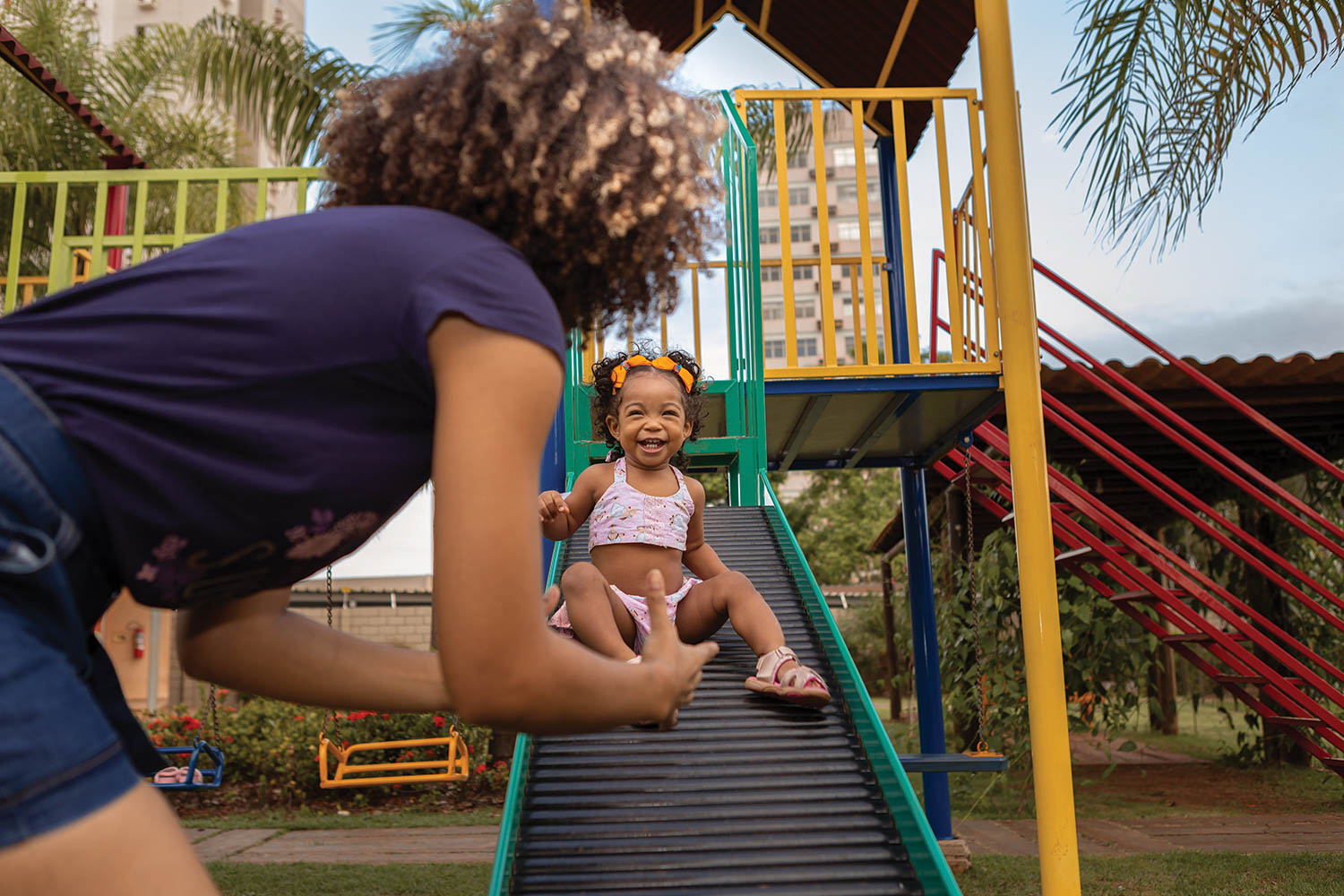How to Work Out With Your Kids at the Park

It can be hard to find time to stay active between the daily activities of a parent. Luckily, many tasks increase the time you spend moving around, but you may still be looking for ways to be intentional with exercise.
Playing with your kids can be a great way to hit your movement goals and facilitate vital family bonding time. Getting your children involved will also help them develop critical skills and keep them active.
Why Head to the Park?
Parks and playgrounds have much to offer, with resources like playground equipment, sports courts and a pool. Some places even offer more amenities like a water park, dinosaur digs and train rides to keep your family moving all day. Also, since parks are public areas, adults can connect with others and children have an expanded group to play with.
Activities by Age
Consider your kids’ age and capabilities when choosing activities. Presenting children with challenges within their abilities helps them feel accomplished and builds self-confidence.
Ages 2-3
Kids this age can walk and run. They’re learning balance and are developing hand-eye coordination. A good mix of structured and unstructured play works best for this age. Independent toddlers will want to create their own games, while others may want their caregiver’s guidance. Either way, joining their games and activities will encourage active behavior and give you a good workout.
For this age, try:
- Pretend play: Act like your favorite animals — climb like a monkey, crawl like a caterpillar or hop like a bunny. You can also use the playground equipment and pretend to be pirates, knights, explorers or astronauts.
- Follow the leader: Take turns leading one another around the park. The followers must do whatever the leader does. Get in some physical activity by jumping, squatting, balancing on one leg and running.
- Free play: Lean into your child’s short attention span and just let them play. Following them from activity to activity will get your heart rate up. Push them on the swings, go on the slide with them and play chase.
Ages 3-5
Kids in this stage can move around more. They can work on skills like throwing, catching and taking turns. Games with limited structure will help them learn to follow instructions while having creative wiggle room. Preschoolers are also eager to show off and get competitive.
For this age, try:
- Playground workout: Use the available equipment to try new exercises. Have a plan for your goals, but be flexible. Get your kids involved by challenging them to try what you’re doing.
- Floor Is Lava: See if your family can make it from one end of the playground to the other without touching the ground. You’ll laugh at the inventive ways your children get across the park.
- Catch: Bring a ball and practice tossing it back and forth. Bring a glove and mitt to practice catching if your child is starting T-ball.

Ages 6-12
Elementary-age children will need more of a challenge to keep them motivated. They’re also better at following instructions, so sports are a great way to stay active. Getting involved with local teams can help, but if you want to meet your kids’ activity needs, help them improve their skills off the field, too. A few different sports balls and a jump rope are great investments.
For this age, try:
- Obstacle course: Create an obstacle course out of playground equipment. This is similar to the Floor Is Lava game, but you’re allowed to touch the ground. Once you establish a route, race to see who can complete all the obstacles first.
- Jump rope: Find an open space and play games with a jump rope. Kids at this age can jump and have decent coordination, so combining these skills with a jump rope game will be a good challenge. Jumping and swinging are good for adult joints, too.
- Sports: Help your kids practice sports they’re interested in or introduce them to one you love. Parks often have tennis, basketball and volleyball courts, as well as large areas to play soccer and baseball.
Ages 13-18
Teenagers have more interests than young children. If your teens aren’t involved in sports or other movement-centered activities, they may not be getting enough exercise. Encourage them to get moving by being a good role model. Take time away from school, work and friends to bond over physical activity.
For this age, try:
- Hitting the trails: Go for a walk, hike or bike ride together. Let your teens direct the flow of conversation while you actively listen.
- Yoga: Wake up early and head to the park for a sunrise yoga session. Teens and adults carry a lot of tension and anxiety. Yoga can be the perfect stress reliever, and it will improve your mobility and joint health.
- Sports: Release pent-up aggression with some friendly competition. Teen-parent relationships sometimes suffer but sweating it out together could help smooth things over and provide a healthy release for emotions.
Keep Things Fun
No matter what you choose to do, keep it light and fun. Try activities your whole family can enjoy if you have kids of different ages. Go for a swim or play simple games like tag. A trip to the park should be fun, so make your workout a bonus, not a requirement.
About the Author

Kara Reynolds is the founder and editor-in-chief of Momish Magazine, an inclusive parenting magazine filled with parenting hacks, advice and more to keep your beautiful family thriving.






